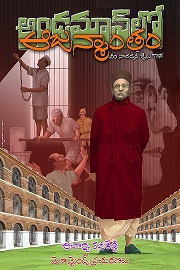Ganesh Chaturthi is one of the major festivals celebrated in India with great enthusiasm and devotion. The festival marks the birthday of Lo...
History
The belief lays in the story of the birth of Ganesha, the son of Lord Shiva and Goddess Parvati. Although there are various stories attached to his birth, the one most relevant is shared here. Goddess Parvati was the creator of Ganpati. She, in the absence of Lord Shiva, used her sandalwood paste to create Ganesha and put him to guard while she had gone for bathing. While she was gone, Lord Shiva got into a fight with Ganesha as he did not allow him to enter, as per his mother’s orders. Enraged, Lord Shiva cut off Ganesha's head. When Parvati saw this sight, she took the form of Goddess Kali and threatened to destroy the world. This worried everyone and they requested Lord Shiva to find a solution and calm the rage of Goddess Kali. Shiva then ordered all his followers to immediately go and find a child whose mother has her back towards her child in negligence and bring his head. The first child seen by the followers was that of an elephant and they, as ordered, cut his head and brought to Lord Shiva. Lord Shiva immediately placed the head on Ganesha's body and brought it to life again. The rage of Maa Kali was calmed and Goddess Parvati was overwhelmed, once again. All the Lords blessed Ganesha and the day is today celebrated for the same reason.Celebration
Ganesh Chaturthi preparations commence from almost a month before the festival. The celebrations last for around ten days (from Bhadrapad Shudh Chaturthi to Ananta Chaturdashi). On the first day a clay idol of Lord Ganesha is installed in homes. Homes are decorated with flowers. Temples witness the visit of large number of devotees. Poojas are performed and bhajans are chanted. Often, families gather together to celebrate the festival. Localities organize and arrange for pandals and install large idols of Lord Ganesha to celebrate the festival with friends and family. On the final day of the celebrations, the idol of Lord Ganesha is taken on the streets. People exhibit their enthusiasm and joy in the form of dancing and singing on the streets along with the idol. The idol is finally immersed in the river or sea. The day witnesses a large number of devotees expressing their happiness and offering their prayers.Ganesh Chaturthi Puja
Ganesha puja starts from installing a clay idol of Lord Ganesha in your home. Various dishes are cooked for offering (bhog). The idol is given a bath with pure water and then decorated with flowers. Jyoti is lite and then the aarti begins. Various bhajans, and mantras are chanted at this time. It is believed that chanting the mantras with complete devotion brings life to the idol. It is also believed that during this period, Ganesha visits the home of his devotees and bring prosperity and good fortune with him. For the same reason the day is observed as a very auspicious day. Worshipping the Ganpati Yantra will bring you great success in life.Festival Dishes
Although there are a large number of sweets offered to Lord Ganesha during the pujan, but Modak is known to be the lord’s favourite sweet and is therefore one of the main dishes made on this day. Other dishes include Karanji, ladu, barfi and pede.When it first started?
Ganesh Chaturthi is celebrated to mark the birth of the Lord of Wisdom. But the history of these celebrations dates back to the era of Chhatrapati Shivaji, the founder of the Maratha Empire. Some historians believe that Shivaji Maharaj first started the celebration of Ganesh Chaturthi in great fervour since Lord Ganesh was the Kuldevata (family God) of the Peshwas. The practise continued till the fall of the Peshwas.
In due course of time, people began celebrating it individually and privately. Centuries later, the festival was reinvented as a symbol of the nationalistic movement by Lokamnya Bal Gangadhar Tilak, famously known as ‘Father of Indian Unrest’.
How Ganesh Puja became a national festival
Tilak noticed that Lord Ganesh was considered “the God for everyman”, that Ganesh was worshipped by the members belonging to the upper castes and lower castes alike, leaders and followers alike. He popularised Ganesh Chaturthi as a national festival ‘to bridge the gap between the Brahmins and the non-Brahmins.’ In 1893, he set up the first and the oldest mandal— Keshavi Naik Chawl Sarvajanik Ganeshotsav Mandal at Girgaum.
Lokmanya Tilak was the first person to install large clay idol of Lord Ganesh in a public place and started the 10-day long affair. It slowly started seeing community participation and involvement. He then started the practice of submerging all such idols on the tenth day of the festival. He used the celebration as a means to bind all the fragmented Hindu community and oppose the British government ban on Hindu gatherings through its 1892 anti-public assembly legislation.
Fusion of religious and social function
This festival also served as a meeting place for common people of all castes and communities. It slowly became a religious and social function. The function was embedded with cultural programmes and nationalistic speeches. Even Muslim leaders participated in these annual celebrations and delivered speeches, exhorting the countrymen to fight for freedom.
The festive fervour instilled a feeling a patriotism among the people and it slowly spread across the country.
But in 1905, it had become a nationwide celebration. Now, thousands of sarvajanik pandals are made with crores of rupees, and the celebrations have become a gala annual affair










No comments